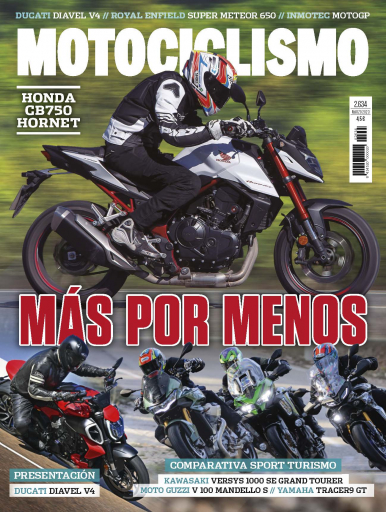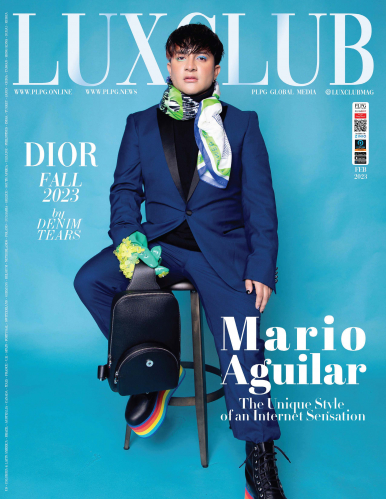
Estás filtrando por
Se encontraron 5776 resultados en recursos

Rituales de purificación, bienestar y prosperidad familiar con velas. Incluye: cómo hacer velas de la suerte.
Recetas de curanderos para sanar enfermedades comunes.
Decepciones amorosas, cómo nos afectan según el zodiaco.
Horóscopo kármico para saber tu misión espiritual.
La forma de amar según la luna.
Fuente:
Pasa La Página
Formatos de contenido:
Publicaciones periódicas
Compartir este contenido
Astrodestino - 11/01/23
Copia el enlace o compártelo en redes sociales

Automás - 10/01/23
Autocatálogo 2023, guía del comprador.
Nuevo Toyota Yaris.
Motocatálogo 2023.
Escoja su auto, fotos e información de todos los modelos del mercado.
Kia Nitro.
Jetour X70 Plus.
Fuente:
Pasa La Página
Formatos de contenido:
Publicaciones periódicas
Compartir este contenido
Automás - 10/01/23
Copia el enlace o compártelo en redes sociales

Grandes Catedrales del Mundo - 07/01/23
Catedral de Reims Francia.
Fuente:
Pasa La Página
Formatos de contenido:
Publicaciones periódicas
Compartir este contenido
Grandes Catedrales del Mundo - 07/01/23
Copia el enlace o compártelo en redes sociales

Woman & Home - 05/01/23
Victoria Derbyshire on grown-up romance & loving the age she is.
Refresh your life! Lose a stone in six weeks. Yes, really. Get happy with simple ways to find joy. Pamper yourself in style – here’s how.
I’m not one for regrets Radio presenter and broadcaster Sara Cox.
Fuente:
Pasa La Página
Formatos de contenido:
Publicaciones periódicas
Compartir este contenido
Woman & Home - 05/01/23
Copia el enlace o compártelo en redes sociales

Moto Verde - 15/01/23
Test Dakar Sherco SFR 450 Santolino.
Ducati Desertx.
Prueba Racing Cross. Kawasaki KX 450 de Sergio Castro. Cambios certeros en una estructura de gestión personal.
Especial Raids. Rally Dakar. Segundo triunfo de Kevin Benavides.
Fuente:
Pasa La Página
Formatos de contenido:
Publicaciones periódicas
Compartir este contenido
Moto Verde - 15/01/23
Copia el enlace o compártelo en redes sociales

Horse and Hound - 09/03/23
What makes a top event rider?
Plus: the horses who launched stars’ careers.
Cheltenham. Behind the scenes at Dan Skelton’s yard.
Opinion. Mark Phillips on whip use, flags and falls.
Fuente:
Pasa La Página
Formatos de contenido:
Publicaciones periódicas
Compartir este contenido
Horse and Hound - 09/03/23
Copia el enlace o compártelo en redes sociales

Mia - 18/01/23
Soraya Arnelas "Me gustaría presentar un programa de televisión matinal en mi tierra, Extremadura".
Pierde volumen con la dieta de la alcachofa.
Pilates. Fortalece piernas, abdomen y columna.
Recetas especiales con lácteos.
Viaje. 6 nuevos pueblos en la lista de lo más bonitos de España ¡Visítalos!
Fuente:
Pasa La Página
Formatos de contenido:
Publicaciones periódicas
Compartir este contenido
Mia - 18/01/23
Copia el enlace o compártelo en redes sociales

Motociclismo - 13/03/23
Más por menos. Honda CB750 Hornet.
Comparativa Sport Turismo.
Kawasaki VERSYS 1000 SE Grand Tourer. Moto Guzzi V 100 Mandello S // Yamaha TraceR9 GT
Presentación. Ducati Diavel V4.
Fuente:
Pasa La Página
Formatos de contenido:
Publicaciones periódicas
Compartir este contenido
Motociclismo - 13/03/23
Copia el enlace o compártelo en redes sociales

Chat - 23/02/23
Caught red-handed. I trapped mum's killer in the loo. In that moment, I had to make a choice – did I want justice or revenge?
My Fight. Don’t take away my girl because she’s diferent.
This animal chewed off a dad’s face. Why isn't he in jail?
Fuente:
Pasa La Página
Formatos de contenido:
Publicaciones periódicas
Compartir este contenido
Chat - 23/02/23
Copia el enlace o compártelo en redes sociales

Luxclub Magazine - 08/02/23
Mario Aguilar. The unique style of an Internet sensation.
Dior Fall 2023 by Denim Tears.
Joe Audal.
Joel Goodrich.
Fuente:
Pasa La Página
Formatos de contenido:
Publicaciones periódicas
Compartir este contenido
Luxclub Magazine - 08/02/23
Copia el enlace o compártelo en redes sociales
Selecciona las Colecciones en las que vas a añadir el contenido
Para consultar los contenidos añadidos busca la opción Tus colecciones en el menú principal o en Mi perfil.
